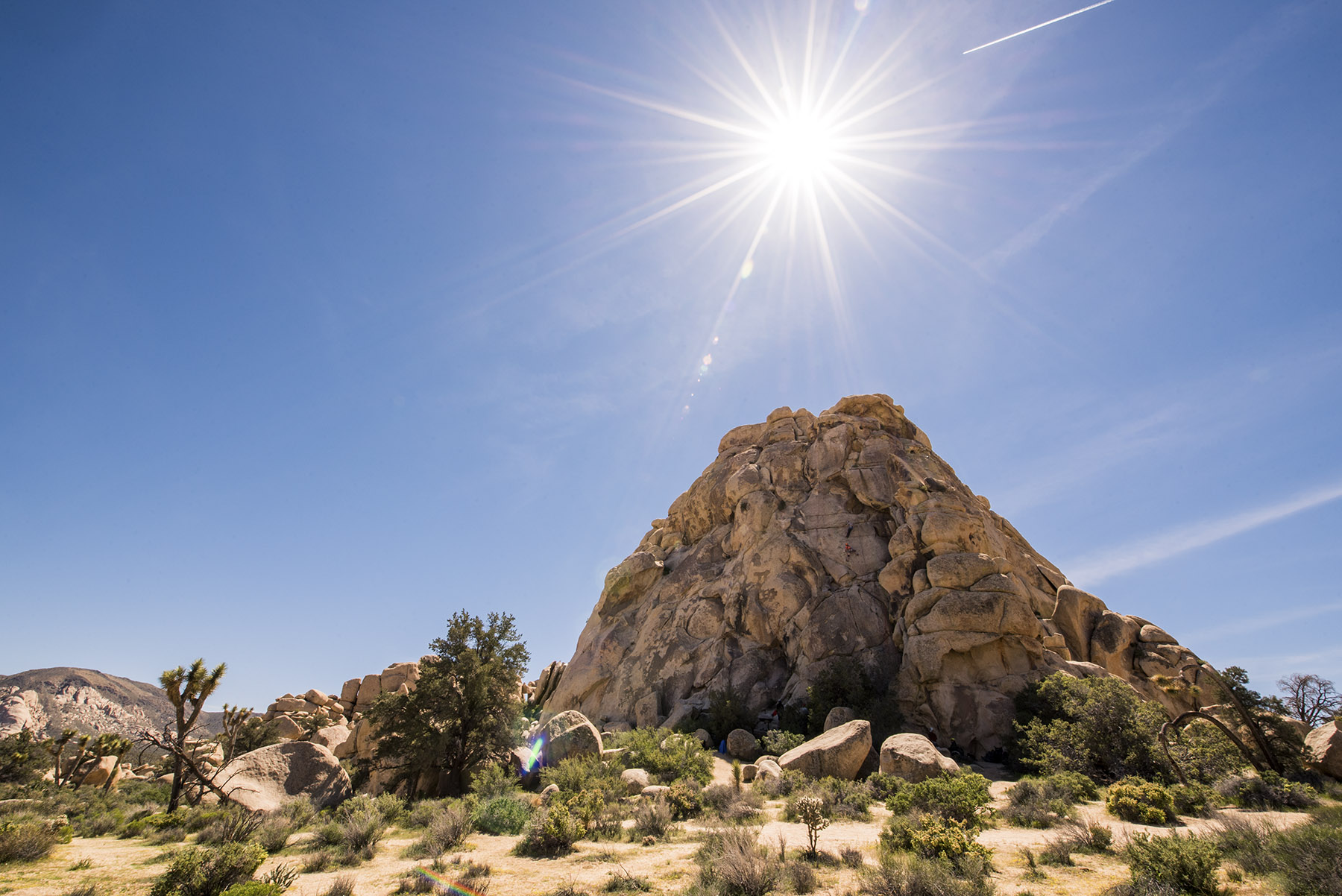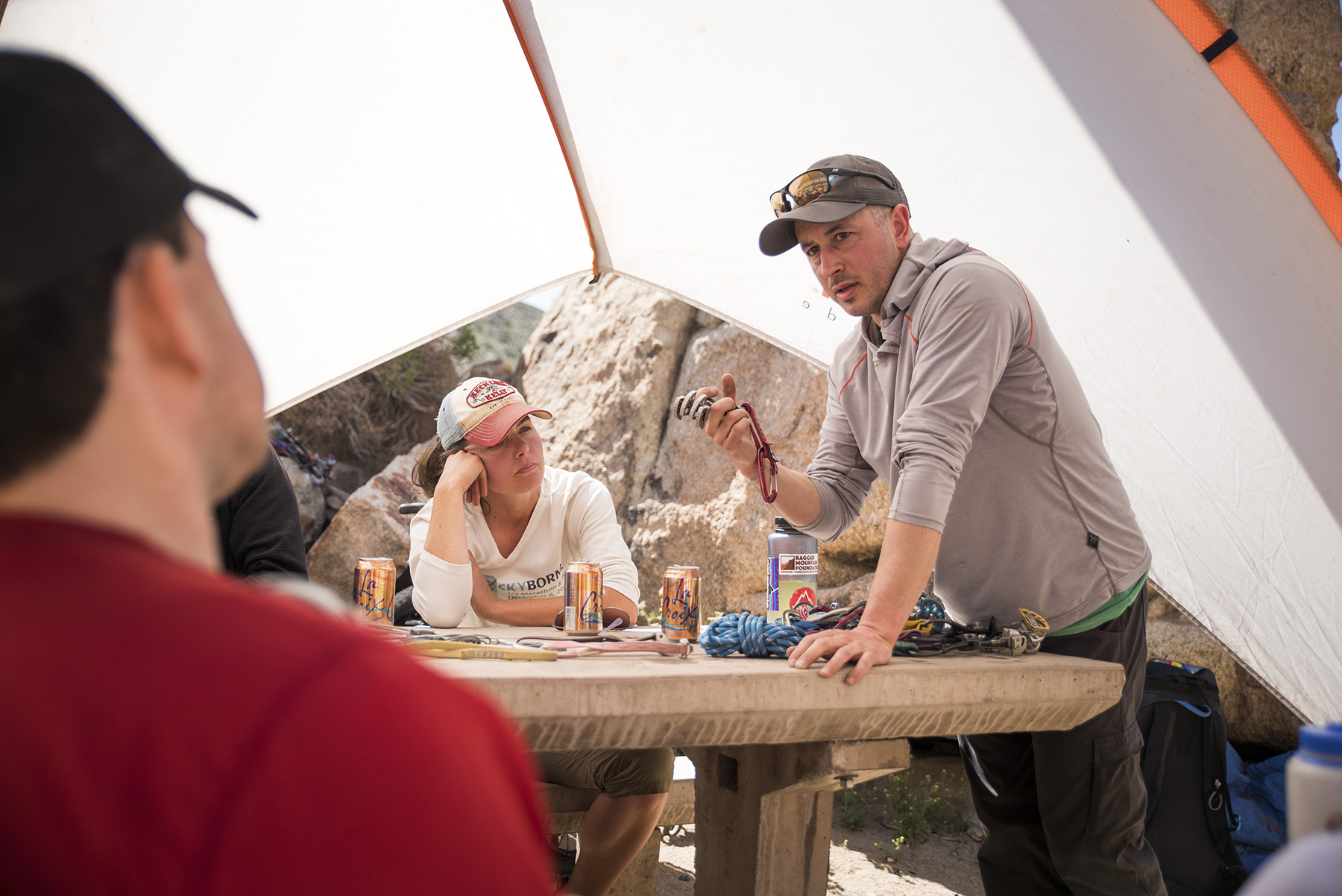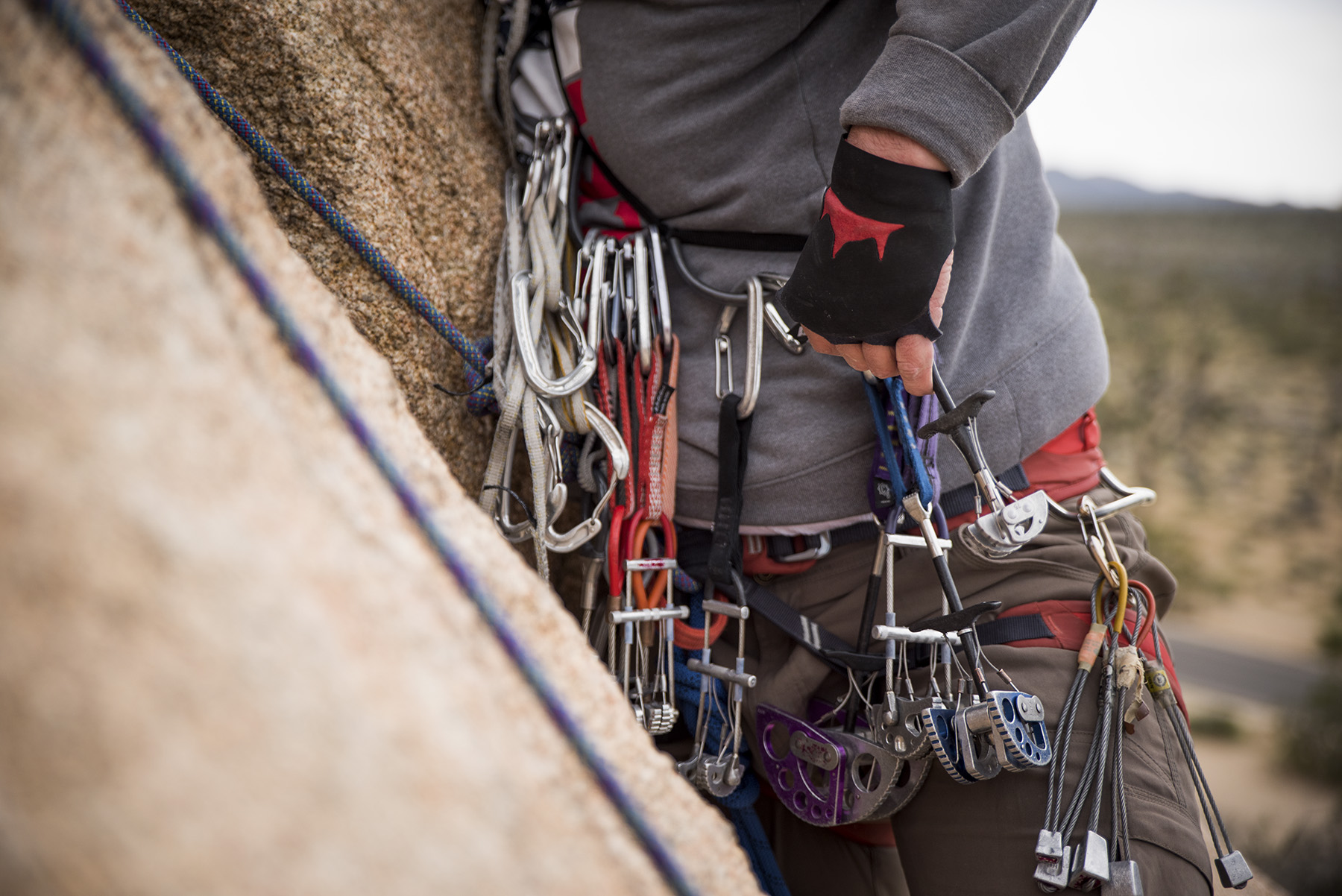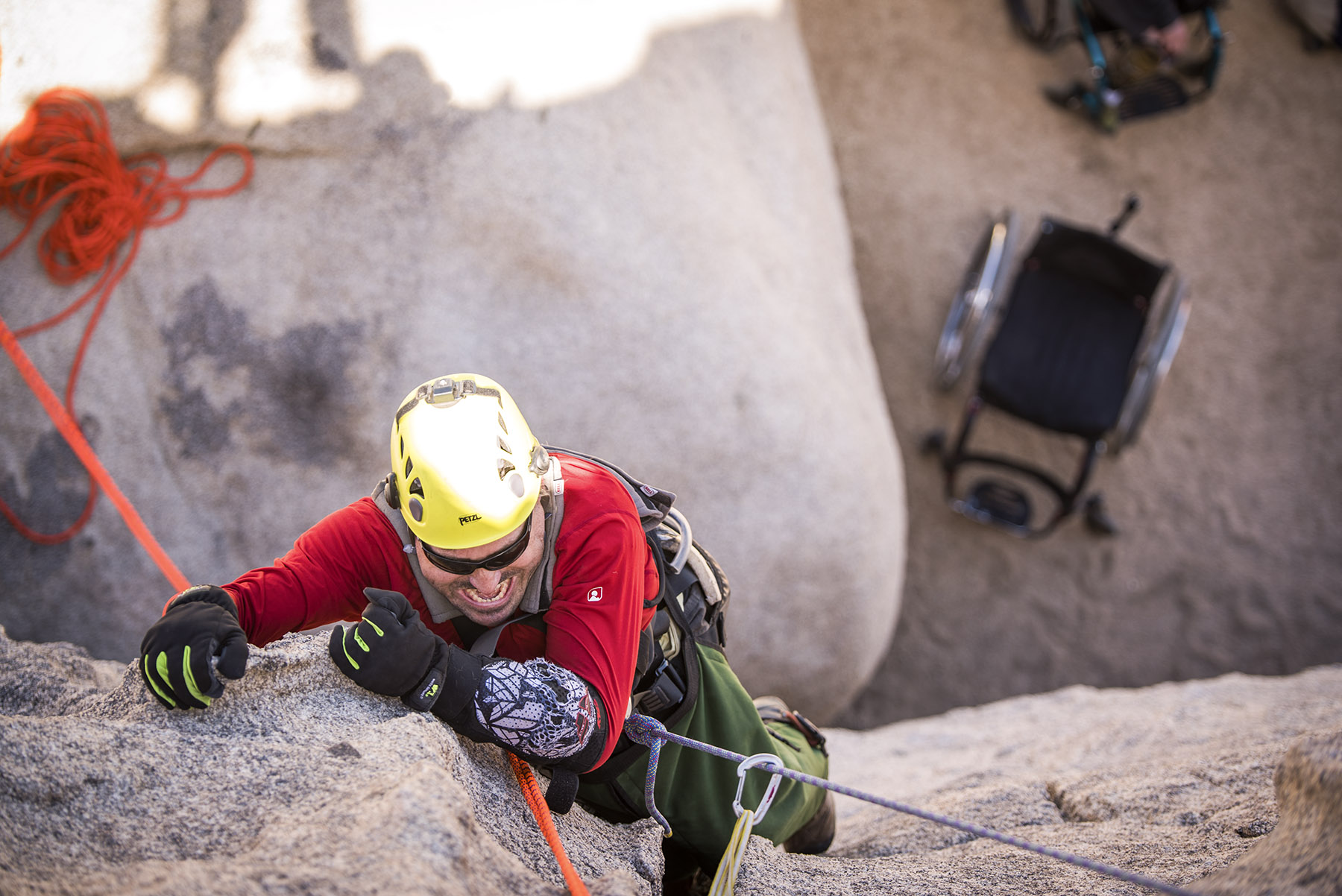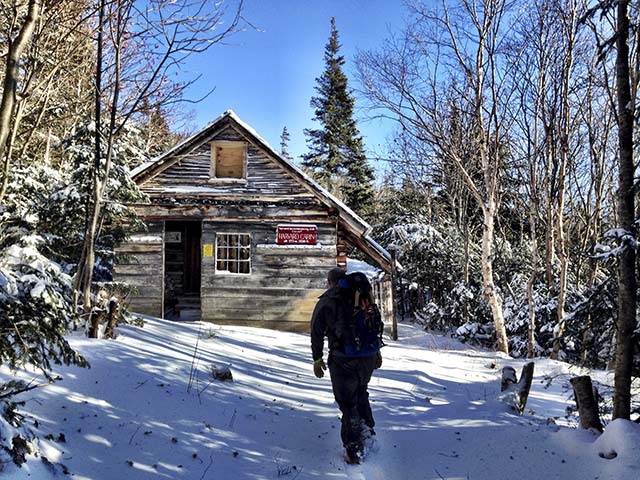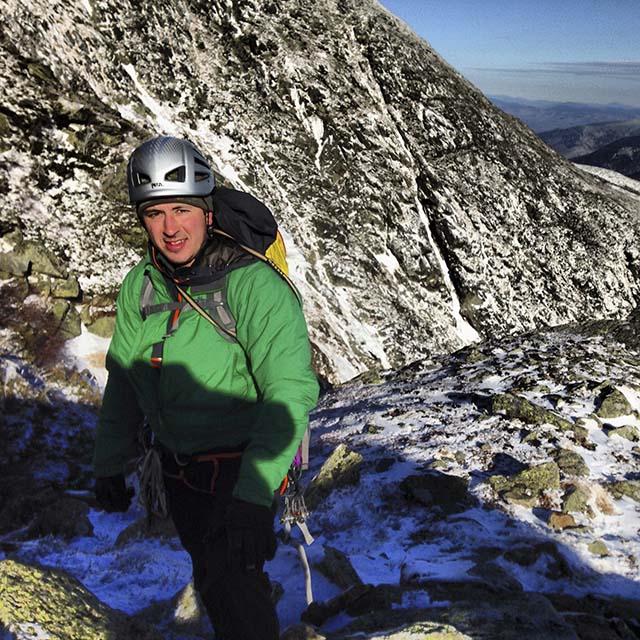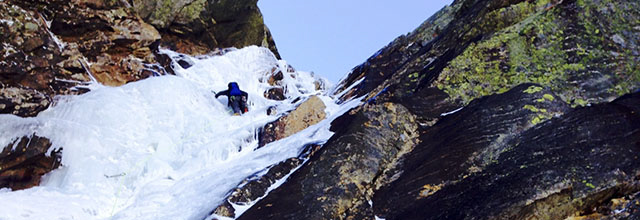Essential Items For The Crag
What to bring to the crag... other than climbing gear!
What should come with and what should stay home
When heading to the crag, most of your pack is made up of climbing gear, but there’s also a lot of other stuff that makes a day at the crag go smoothly. We’ve made a packing list for all that extra stuff to make sure your day on the rock is as easy as it can be.
Your personal ITEMS
What every person in your party should have
Harness, Shoes, Helmet
Water
Tasty snacks/ meals
A head lamp
Nail clipper
Climbing tape
Group Gadgets
Items for the whole party to use
First aid kit
Sun screen
Bug Spray
Bathroom kit
toilet paper, wag bag, small shovel, hand sanitizer, period products for those that need them.
Things to Leave at Home
Maybe give a little more thought before bringing these to the crag
Speakers
Hammocks
Bad vibes
Furry Friends
Take a look at this access fund article for best practice when thinking of climbing with your dog.
Every crag presents different circumstances so make sure you read up before you climb!
See ya out there!
Blake Cheney, Ascent Climbing Instructor
Find Friendly Trad Climbs in CT
Get into the world of CT trad climbing with this list of friendly trad climbs!
CT has some really excellent trad climbing, however Trad climbing is a very intimidating sector of climbing. Down below we have listed some of CT’s friendliest beginner trad climbs.
Top roping the climbs you’re looking to do before you lead them is a great way to mitigate risk. It allows you to get used to the movement and gear on the climb, before you hop on the sharp end.
Trad climbing is very dangerous. Proper education, training, and practice are required for climbers to avoid injury and accidents. Seek qualified instruction and mentorship.
WHERE TO START - Climbs that are great for getting really solid placements and practice.
Star Fire 5.1 - Wolf Rock
Pebble Beach 5.2 - Wolf Rock
Double crutch 5.3 - Pinnacle Rock
Kiddy crack 5.3 - Chatfield Hollow
VeeZee 5.4 - Pinnacle Rock
First crack 5.4 - Pinnacle rock
Kiddy slab 5.4 - Chatfield Hollow
Clark Bar Crack 5.5 - Chatfield Hollow
NEXT STEPS - The next step in CT trad climbing. We always recommend top roping climbs to really get them down pat before hopping on the sharp end.
Leapfrog 5.6 - Pinnacle Rock
Sixth sense 5.6 - Pinnacle Rock
Super slab 5.6 - Chatfield Hollow
Don’t do it Hank’s way 5.6 - Chatfield Hollow
Third Crack 5.7+ - Pinnacle Rock
We chose these climbs based on rock quality, gear placements, and quality anchors at the top. We also chose these climbed around what crags are open and accessible to climbers. Before heading to the crag make sure you double check if climbing is allowed. For more info on crag access check out the Ragged Mountain Foundation.
Looking to start trad climbing? Check out our upcoming courses, book a private guide, or reach out to us with any questions.
See ya out there!
Blake Cheney, Ascent Climbing Instructor
Connecticut Top Rope Anchor Shopping List
Essential equipment before you head out to the local traprock crags in Connecticut.
The Top Rope Anchor Course is one of the most popular courses I teach. We cover lot of information in those first couple days out and I’m often asked “what kind of climbing anchor equipment should I buy now?”
Following is a list of equipment you’ll need for top rope climbing in Connecticut complete with tips on what to buy and gear you should stay away from. The focus here is on rigging anchors from natural protection i.e. trees, boulders and horns.
Connecticut top rope anchor setup often requires long static ropes and creative anchoring to reach the cliffs edge.
WAIT UNTIL YOU KNOW FOR SURE
If you’re thinking about purchasing your own top rope rig wait until after you take a course. Practicing with the guides equipment will allow you to make more informed decisions on what to buy. Keep in mind that retailers often (or probably should) have policies against returning safety equipment.
KNOW THE ENTIRE HISTORY OF YOUR GEAR
When it comes to safety equipment it’s best to stay away from used gear, especially products made of nylon (i.e. ropes, harnesses, etc). Carabiners can last indefinitely but harnesses and ropes have a life span of only a few years for most users. Retire your equipment in accordance with manufacturer specifications and store in a cool, dry and chemical-free environment – contamination is to be avoided at all costs.
PURCHASE EQUIPMENT MANUFACTURED SPECIFICALLY FOR CLIMBING
It seems obvious but avoid re-purposing ropes, harnesses and safety equipment from other activities, hardware stores and marine supply shops. Despite the labels strength ratings you may find the wear properties, intended uses and ability to hold knots are not appropriate for climbing.
Look for a CE and/or UIAA marks to ensure the equipment has been tested and meets minimum requirements for use in climbing.
Products that carry the CE mark meet minimum EU requirements.
Products with the UIAA mark meet the testing standards of the International Mountaineering and Climbing Federation
Here’s your top rope anchor shopping list
Helmet (one for each member of your party)
Static Rope
Dynamic Climbing Rope (60m or 70m)
(6) Locking Carabiners (HMS, Pear Shape)
(1-2) Cordelette (7mm, ~20')
(2) Sewn Slings (120cm, 240cm)
Brake Assist Belay Device (GriGri, Cinch, etc)
CLIMBING HELMET
If you climb outdoors (especially around here) you must wear a helmet for protection from falling objects i.e. loose rock at Ragged Mountain and airborne glass bottles at Pinnacle Rock.
Recommendation: Buy a lightweight helmet you like, cover it in stickers and don’t skimp on the price. You’re far more likely to carry and wear a helmet you like it vs. one of those heavy miners helmets we used to wear.
STATIC ROPE
You’ll want a long low-elongation rope to reach those far away trees and blocks common at Connecticut crags. Stay away from spooled webbing – the durability of a static rope vs. tubular webbing will dramatically increase the security of your anchors.
Recommendation: Nearly all major climbing rope manufacturers are making good static ropes. Your static rope should be 10mm or greater in diameter and about 40 to 50 meters long. Buy dark solid colors not easily confused with your dynamic climbing ropes.
I like to use the Sterling 3/8″ SuperStatic2 in our climbing school.
DYNAMIC CLIMBING ROPE
Which dynamic rope you choose has much to do with the terrain and type of climbing you like to do. For top-rope climbing in Connecticut, you’ll want something a little thicker for durability and at least 60 meters in length to reach the tallest climbs at Ragged Mountain.
Recommendation: Look for a dynamic rope between 10-10.2mm in diameter x 60 meters in length. Dry treated ropes will cost a little more but tend to be stronger and last longer than non-treated lines.
I like the Sterling Velocity 9.8 and the Mammut Crag Classic for their handling and durability.
SIX (6) LOCKING CARABINERS
You’ll want to have several locking carabiners available in addition to the ones you used to belay. Most anchors will use at least three and you’ll find the extras useful for rigging ground anchors, rappel backups, and myriad other uses.
Recommendation: Avoid small D and modified D-shaped locking carabiners. You’ll often need to clip bulky knots and master-points that require a larger gate opening. Pear and large D-shaped carabiners work well in top rope anchors.
I like to use the Petzl Attache and William carabiners.
CORDeLLETE
A necessity for tying off trees, flakes, blocks or for equalizing multiple pieces of protection into a single anchor point. So useful you might want two!
Recommendation: Purchase 7 meters (~23ft) of 7mm accessory cord. Form a loop by tying the ends together with a figure 8 bend (preferred) or a double fisherman’s knot.
SEWN NYLON SLINGS
Slings come in a variety of lengths, strengths, and materials. For top-rope anchors, you may want to have a couple of longer runners available. For top-rope anchors use thicker nylon or Dyneema blend slings for their durability and strength – you probably want to avoid the super-thin, lightweight Dyneema slings meant for lead and alpine climbing.
Recommendation: Carry (1) 120cm (double-length) sewn sling and (1) 240cm (quad-length).
I like to use the Black Diamond Dynex and nylon (22kn) and the Bluewater Titan (27kn) runners.
BRAKE-ASSIST BELAY DEVICE
Increase your security while working near the edge with a brake assist belay device attached to your anchored working tail. Go hands-free with a bomber catastrophe knot within arms reach of the device. The brake assist devices are pricey but can also come in handy for self-rescue, belaying from the top and belaying your partner while they hang-dog their project.
I like to use the Petzl GriGri for securing myself at the cliff edge.
Recommended Reading
Rock Climbing Anchors by: Craig Luebben
Self-study is an important part of your continuing education in climbing. There’s a lot of questionable information out there. Be sure to learn from reputable sources.
Nothing can replace professional instruction but his book is one of the better printed sources of trusted and tested anchoring techniques.
Joshua Tree Skills Camp with Paradox Sports [Slideshow]
Photos by Will Strathmann
http://www.willstrathmann.com
Trad Climbing in Joshua Tree National Park
Every climber should learn trad IMHO.
There's certainly nothing wrong with clipping bolts or bouldering but the ability to place gear opens up so much incredible terrain. You can basically go anywhere.
This spring I joined a small group of instructors from Paradox Sports to lead a 5-day Trad Camp at Joshua Tree National Park about 2 hours drive from Los Angeles in Southern California.
Joshua Tree is a nearly 800,000 acre park where the Mojave and Colorado deserts converge. The park is famous for its wilderness landscapes, high desert (often nocturnal) creatures and the Dr. Seussian yucca palm trees from which the park derives its name.
A treasure for climbers, Joshua Tree is covered in coarse, rounded piles of monzo-granite boulders and formations with 1,000's of named climbing routes.
Paradox Rocks: Joshua Tree Skills Camp
Paradox Sports is a non-profit that runs rock and ice climbing programs for individuals with disabilities at places like Yosemite, the Ouray Ice Park and the Gunks.
For 5 days we practiced camping skills, anchor building, lead skills, belaying, gear placement, knots, rappelling, rope ascension and a host of other indispensable skills and tricks of the climbing trade.
Each of the participants were experienced climbers who came to learn and increase their independence climbing outside.
Sean is a blind competitive climber from Chicago with the goal of leading outside without assistance. Bonnie is a double leg amputee with competition experience and is one of only a couple AMGA certified Climbing Wall Instructors with a disability.
Adam is a world cup competitor who's climbed rock and ice all over the US and in France. Enock was born with spina bifida and although he doesn't walk - he's climbed El Capitan in Yosemite.
Paradox raised the bar once again by offering the first multi-day climbing, camping and skills course for adaptive climbers. Paradox disregards common assumptions about what folks are capable of (or incapable of) due to their disability.
Help by supporting Paradox Sports or invite a friend or family member to attend a Paradox rock or ice climbing trip.
Photos and video by Will Strathman http://www.willstrathmann.com
A White Mountain Rescue
A WFR course gets some real world training with two simultaneous calls for rescue on Mt Washington.
By Christopher Broughton-Bossong
SOLO Wilderness Medicine Instructor
Students practice first aid and emergency response during a recent Wilderness First Responder Course.
During a summer teaching wilderness medical response courses in the White Mountains, I was contacted by New Hampshire Fish and Game to assist with a rescue on the Glenn Ellis trail, leading up Mt Washington. It was an overcast and rainy day and I happened to be in the middle of teaching a wilderness first responder course for SOLO when the call came in. This timing worked out quite well as it meant I had a class of roughly 20 additional and unsuspecting rescuers to bring along.
The Glenn Ellis trail is a rather arduous trek and the more hands for something like this the better. The call had come in for a young girl with a school group who had a seizure near the top of the trail. During the hike in, a ground hornet nest had been disturbed and clouded the trail with hornets, to add a bit more to the challenge. A hasty team had already arrived on scene and gotten the girl packaged into a litter. During the event, one of her classmates was nearing a panic attack and so her teacher took the initiative to walk this student out ahead.
As our team was hiking down with the young seizure patient, I was alerted, by radio, that there was a second call on the mountain and on the same trail. The teacher who hiked out ahead had fallen and may have broken her collar bone. Myself and another rescue ran ahead to assist her. Her collar bone seemed to be intact but she had broken her arm in three places. Each fracture prevented us from being able to splint or sling the next appropriately. We had to improvise. We managed to use several triangular bandages and an ace bandage to secure her arm well enough to allow her to comfortably walk out. A problem we had not anticipated was that with her arm slung extending downward in front of her, she could not lift her leg more than about six inches without her thigh bending her broken wrist. This made traversing a boulder field seemingly impossible.
We used a daypack, flipped it upside down and had her step through the straps with her legs then secured the lumbar strap around her waist, creating a makeshift harness. This allowed us to lift her onto, over and down the areas that she could not climb over on her own. She managed to walk herself the entire way back down the mountain to the waiting ambulances.
Tuckerman Ravine seen from the Lions Head Trail on Mt Washington, NH
Facilitating any rescue in a wilderness setting is inherently challenging and not without risk. Having the number of patients double with one of them sustaining multiple fractures is nearly enough for the challenges to quickly outweigh the available resources. We were fortunate that both patients were stable and we had a team of rescuers ready and able to think outside of the box and improvise the tools needed to overcome each new obstacle as it arose. I overheard one of the paramedics on that rescue who was also a state medical examiner comment on the students that he had never seen a litter team move someone so quickly while continuing to check vitals rotate out people on the litter and descend a mountain without setting the litter down. He had no idea that they were just students and had never done a rescue like this before. It was one of my proudest moments as an instructor. We never know when things will take a turn for the worse but having the confidence to meet those challenges and maintain your composure really can make the difference between life and death out there.
Be Prepared
Accidents happen. People get hurt, sick, or lost. Would you know what to do? By learning a few basic skills, you can make the difference between a good outcome and a bad one-and maybe even save a life.
Ascent Climbing and Rock Climb Fairfield are teaming up to bring SOLO’s Wilderness First Aid (WFA) and WIlderness First Responder (WFR) courses to Fairfield, Connecticut in May 2016.
Wilderness First Aid (16 hours)
May 21-22, 2016
Wilderness First Responder (80 hours)
May 24-31, 2016
Early Season Ice Climbing on Mt Washington
Pinnacle Gully is located on a dark, north-west facing wall of Huntington Ravine. The mountain is famous for some of the worlds worst weather and highest recorded wind speeds.
I got a call this week from good friend and local guide Matt Shove of Ragged Mountain Guides inviting me up to New Hampshire for some early season ice climbing on Mt Washington. The forecast on the observatory website warned of bone-chilling temperatures well below zero, wind gusts to 130mph and wind chills exceeding 60 below at the summit.
“I’m in!” I was psyched to get first “sticks” of the season before the forecasted rain and holiday busyness set in.
Pinnacle Gully is located on a dark, north-west facing wall of Huntington Ravine. The mountain is famous for some of the worlds worst weather and highest recorded wind speeds. High winds, low visibility, cold temps, fostbite and avalanche are just some of the hazards on a winter ascent. But as I drove north from Connecticut, it looked like we could catch a break in the weather. Skies were clearing and the low snow accumulation totals meant avalanche risk would be virtually non-existent.
When the route came into view we commented that the ice looked a little scrappy and might not be thick enough to accept even short ice screws. Climbing conditions on the route turned out to be pretty good. The climbing was fun and moderate but protection and belay anchors were scarce. Rushing water could be seen and heard just a few inches under the surface. We opted to move quickly and simul-climb the easier sections in search of belays and protected stances. Thin ice meant that loose rocks would fall in the narrow gully.
Stats:
Pinnacle Gully, Huntington Ravine, Mt Washington
Grade: III WI3
First Ascent: 1930, Scoville & Whittlesey
Temps: 0 to 10 F, wind chill ~30 below
Winds: Gusts to 62mph
Round Trip: 8 miles (approx)
Duration: ~7hrs Pinkham to Pinkham
We’re booking our ice climbing programs now! Get in touch or call (203) 675-5510 to book your ice climbing trip!




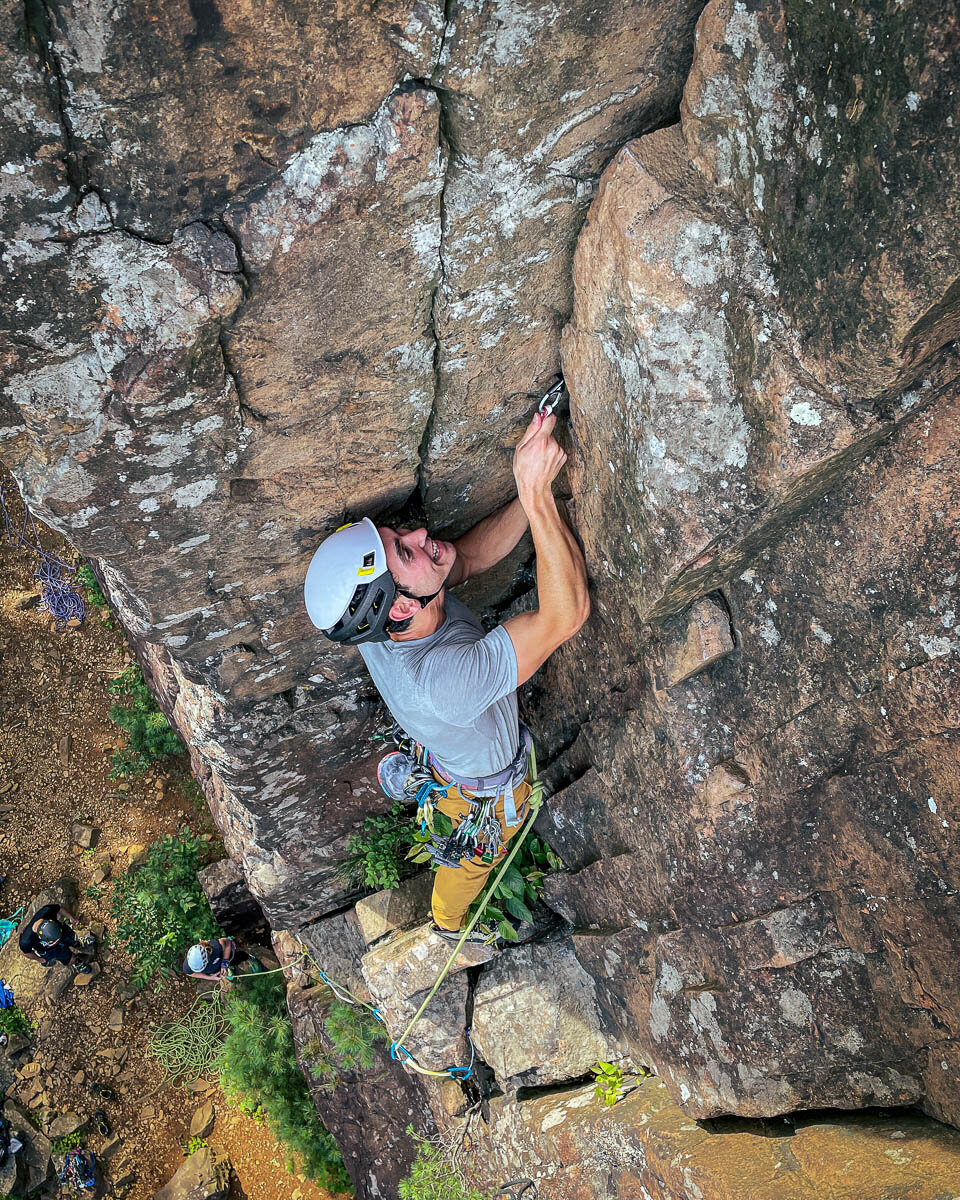





![Joshua Tree Skills Camp with Paradox Sports [Slideshow]](https://images.squarespace-cdn.com/content/v1/56dc7a6820c647a2ce55e533/1498791086045-2P028L7KJ2E5Q7QF9KQ6/Paradox+Sports+Joshua+Tree+Day+4-033.jpg)

